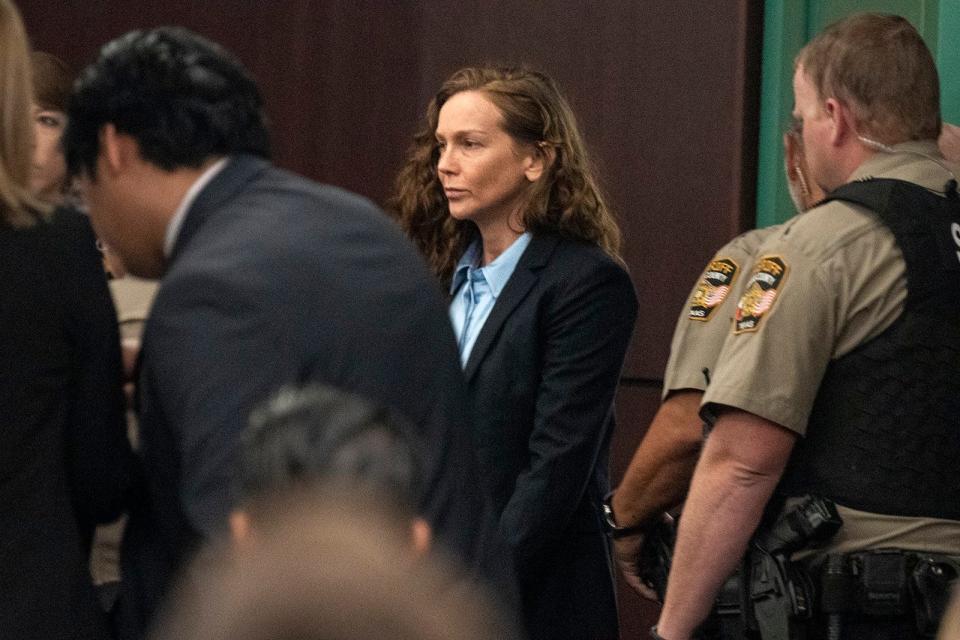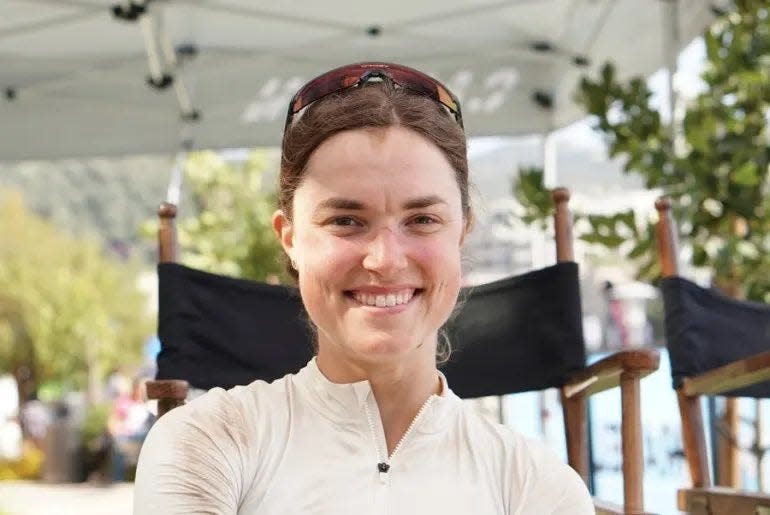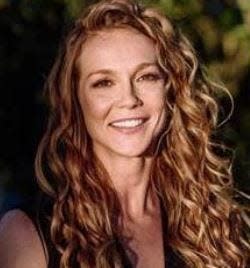DNA expert says Kaitlin Armstrong's DNA could have been transferred without touching bike
Defense attorneys on Wednesday suggested that Kaitlin Armstrong's DNA on a motorcycle helmet could have been transferred onto Anna Moriah "Mo" Wilson's bicycle after Wilson wore the helmet.
Armstrong, 35, is charged with murder in the fatal shooting of Wilson on May 11, 2022, at an East Austin garage apartment. The prosecution rested its case at the end of Tuesday, Judge Brenda Kennedy announced in court on Wednesday morning.
Witnesses have said Armstrong was jealous of Wilson because she had dated Armstrong's boyfriend, Colin Strickland, for a few weeks when he and Armstrong had briefly broken up. A DNA analyst has testified that Armstrong's DNA was found on the handlebars and seat of Wilson's bicycle after the cyclist's death.
Defense witness Matt Quartaro, a forensics DNA consultant, said Wednesday that it was possible for a person's DNA to transfer to an object that the person had never touched. "DNA could be present on a water bottle from someone who never touched it," said Quartaro. He said the person who touched the bottle could have previously shaken the hand of someone else and transferred that person's DNA onto the bottle.
Defense attorney Liz Duggan asked Quartaro if a helmet would be a source of DNA if someone was wearing it while riding on a motorcycle. He said it was possible. Wilson, on the day she was killed, was wearing Strickland's motorcycle helmet when she rode on Strickland's motorcycle with him, witnesses have said. Strickland also had worn the helmet earlier that day when he went to a dentist appointment, witnesses have said.
"Is it possible for Armstrong's DNA to be on Wilson's bicycle even if Armstrong never touched it?" said Duggan. "It's possible," said Quartaro.
Prosecutor Rickey Jones asked Quartaro if it was possible Armstrong's DNA was on Wilson's bicycle because Armstrong had touched the bike. Quartaro said it was. Jones also asked if DNA could be washed off by swimming. Quartaro again agreed. Wilson and Strickland had gone swimming the afternoon that she had ridden on his motorcycle with him.
Jones also said that Armstrong had not ridden on the motorcycle for 30 days before the shooting. "You are not here today to tell us how the defendant's DNA got on Ms. Wilson's bike?" Jones asked Quartaro. "No sir," said Quartaro. "DNA doesn't tell us how it ended up somewhere."
Strickland later testified Wednesday that he and Armstrong had separate motorcycle helmets and Armstrong mostly used her own helmet.
Another defense witness, William Tobin, a forensic metallurgic material scientist who once worked for the FBI, said Wednesday that the method Austin police used to be able to testify that shots fired at the crime scene came from Armstrong's gun was not accepted by the scientific community.
"It is 100% subjective and cannot be called a science," Tobin said.
A police forensics officer had testified that he used a microscope to compare bullets and cartridge casings found at the scene to those test-fired from Armstrong's gun and found striations, or tiny lines, that were similar. The methods he used are accepted by the Association of Firearm and Tool Mark Examiners, he said.
Tobin said that method was not scientifically accepted for many reasons, including that it didn't use any parameters to determine how many of the striations had to be similar before an investigator could say the shots came from a certain gun. Tobin compared the problem to a cake recipe that said specific ingredients had to be used but never listed the amount of ingredients necessary.
The Association of Firearm and Tool Mark Examiners "is not a scientific culture," Tobin said. "They don't understand the terms. They try to conduct experiments or studies that Einstein would be proud of based on his definition of insanity."
Prosecutor Guillermo Gonzalez asked Tobin if he examined any of the evidence in the case. Tobin said he had not. In response to a question from Gonzalez, Tobin said he was being paid $5,000 for his testimony.
Erin LaGrone, a latent print examiner for the Austin Forensic Science Department, also testified about prints from the crime scene submitted to her by a detective who requested that they be compared to Armstrong's fingerprints. None of those prints matched Armstrong's fingerprints, LaGrone said.

Gonzalez asked LaGrone if some of the prints submitted were inconclusive. LaGrone agreed.
"So Ms. Armstrong could not be included or excluded in those prints, right?" asked Gonzales. "Yes," said LaGrone.
Defense attorneys have suggested that police did not investigate other suspects in Wilson's death, including Strickland. They have said detectives never did a forensic investigation of Strickland's computer and never tested evidence to see if Wilson had been sexually assaulted.
Prosecution witness Pam Mazak, a criminal intelligence analyst with the Texas attorney general's office, testified Tuesday afternoon that data from Strickland's cellphone showed he was in South Austin when Wilson was killed in East Austin.
More: Analyst: Kaitlin Armstrong's DNA found on Mo Wilson's bike, along with third person's
Strickland's phone pinged on a cellphone tower near his South Austin home while he was talking on the phone with a friend from 9:06 p.m. to 9:17 p.m., Mazak said. Police have said they never found anyone who heard gunshots when Wilson was killed at an East Austin garage apartment, but that a neighbor's surveillance system recorded screams and gunshots at 9:15 p.m.

Surveillance cameras in the neighborhood where Wilson, 25, was staying showed a black SUV in the area resembling Armstrong's Jeep about the same time GPS data from the Jeep also showed it was in the same area, Mazak said.
More: Police witness: Kaitlin Armstrong's phone turned off hours before Mo Wilson killed
She said the GPS data from Armstrong's Jeep showed it was parked from 8:41 p.m. to 9:17 p.m. in an alley just south of the apartment where Wilson was staying. Wilson's bike was later found near where the Jeep had been parked, she said.

Wilson was a star in the cycling world of gravel racing. Strickland was a professional cyclist at the time Wilson died. They initially met at a race in September 2021, Strickland has said.
Armstrong and Strickland were living together and dating again in May 2022 when Wilson visited Austin from San Francisco to prepare for a bicycle race. Strickland and Wilson went to swim and eat on the day she was killed, Strickland has testified. Police have said he dropped her off at the home where she was staying and went back to his South Austin house. He has not been accused of any wrongdoing in the case.
Police have said Armstrong fled to Costa Rica on May 18, 2022, using her sister's passport. Police arrested her on June 29, 2022, at a hostel in the Central American country.
This article originally appeared on Austin American-Statesman: Defense begins presenting witnesses in Kaitlin Armstrong murder trial

